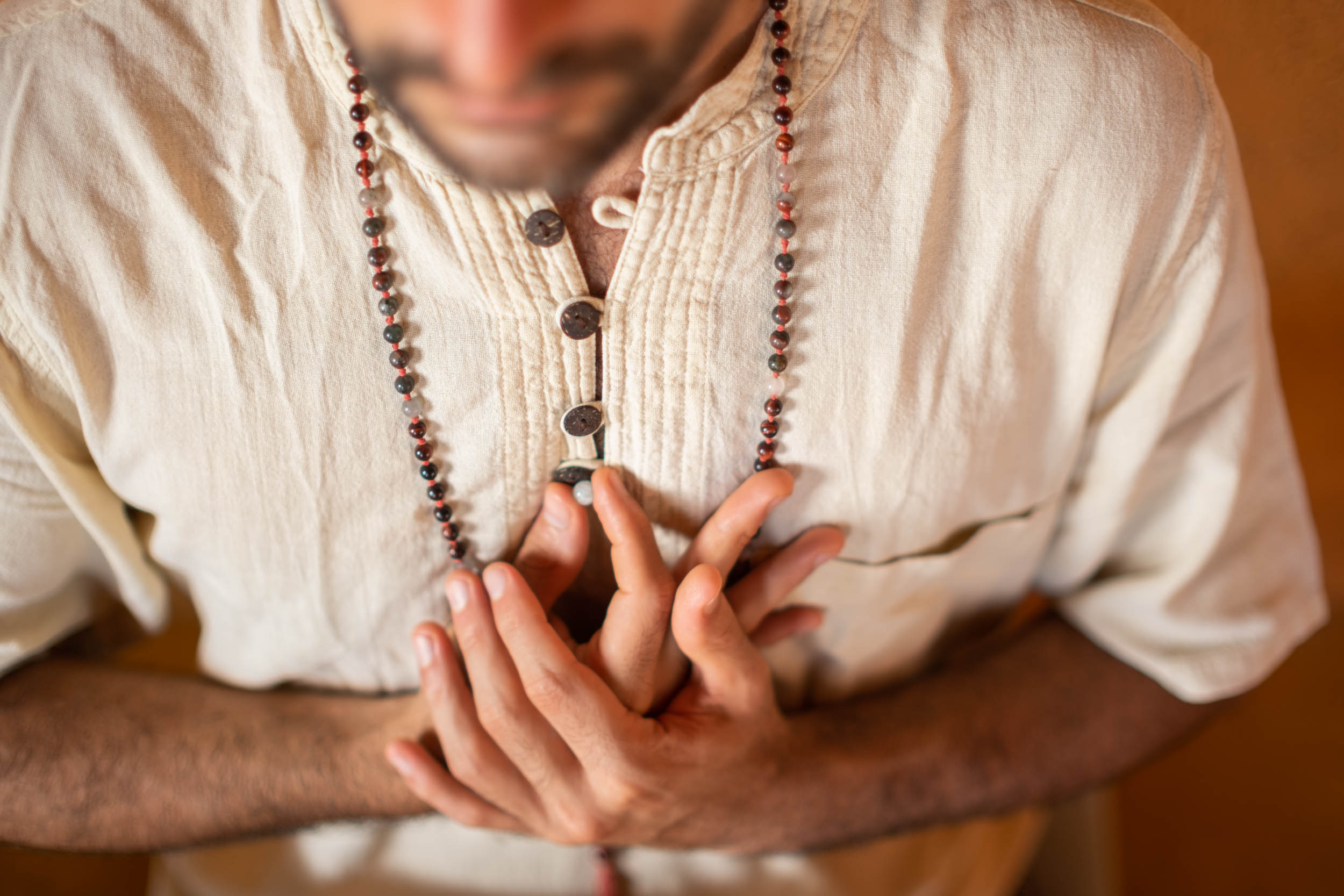
The ancient spiritual wisdom contained in palm leaf manuscripts often prescribes specific practices to harmonize our energies and accelerate spiritual evolution. Among these sacred tools, the mala stands as perhaps the most accessible yet profoundly transformative instrument available to modern seekers.
A mala is far more than decorative beads on a string—it is a powerful spiritual technology designed by the ancient Rishis to focus the mind, purify consciousness, and create a direct connection to higher realms.
The sages who recorded your destiny in the palm leaf libraries understood that physical tools like the mala serve as bridges between the visible and invisible worlds. Just as Nadi Astrology reveals your soul’s journey, the mala provides a tangible means to navigate that path with greater awareness.
Whether you’re seeking to overcome karmic obstacles or establish a consistent meditation practice, the mala offers profound support for your spiritual journey.
Is your spiritual practice aligned with your soul’s unique path? Book your personalized palm leaf reading today to discover the specific practices recommended by the ancient Rishis for your highest evolution.
The word “mala” comes from Sanskrit, meaning “garland” or “meditation wreath.” Its origins trace back thousands of years to the Vedic period in ancient India, where spiritual seekers used rudraksha seeds and other natural materials to count mantras during meditation.
What makes the mala particularly special is its standard configuration of 108 beads—a number of profound cosmic significance in Vedic traditions:
When we use a mala with awareness, we connect to this sacred geometry that links the microcosm of our being with the macrocosm of the universe—a fundamental principle found throughout the palm leaf manuscripts.
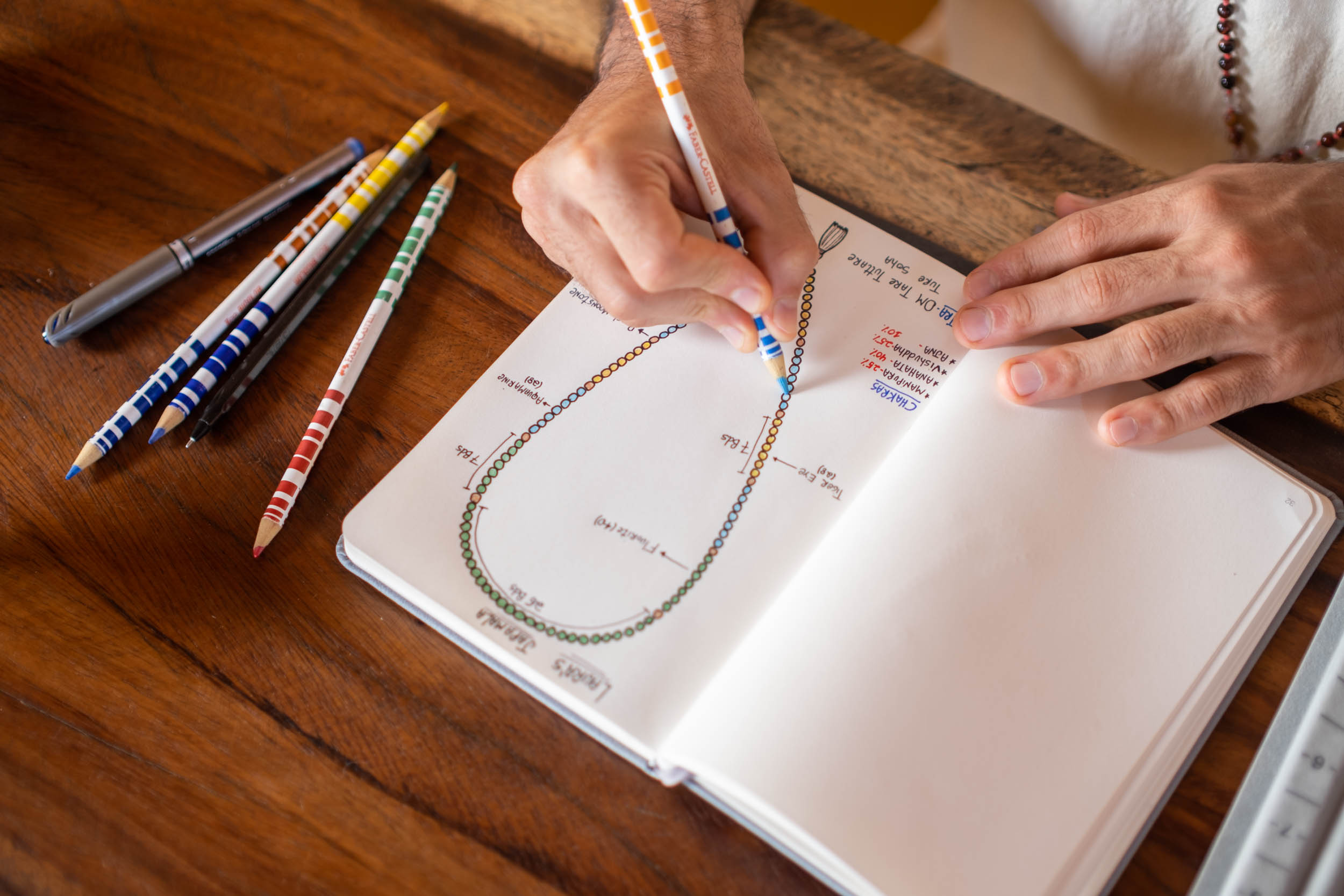
A traditional mala consists of several key elements, each serving both practical and symbolic purposes:
The materials used to craft malas vary widely, with each substance carrying unique energetic properties:
Rudraksha Seeds: Highly revered seeds associated with Lord Shiva that provide powerful spiritual protection and enhance meditation. Many palm leaf remedies specifically prescribe rudraksha malas for those facing challenging Saturn periods.
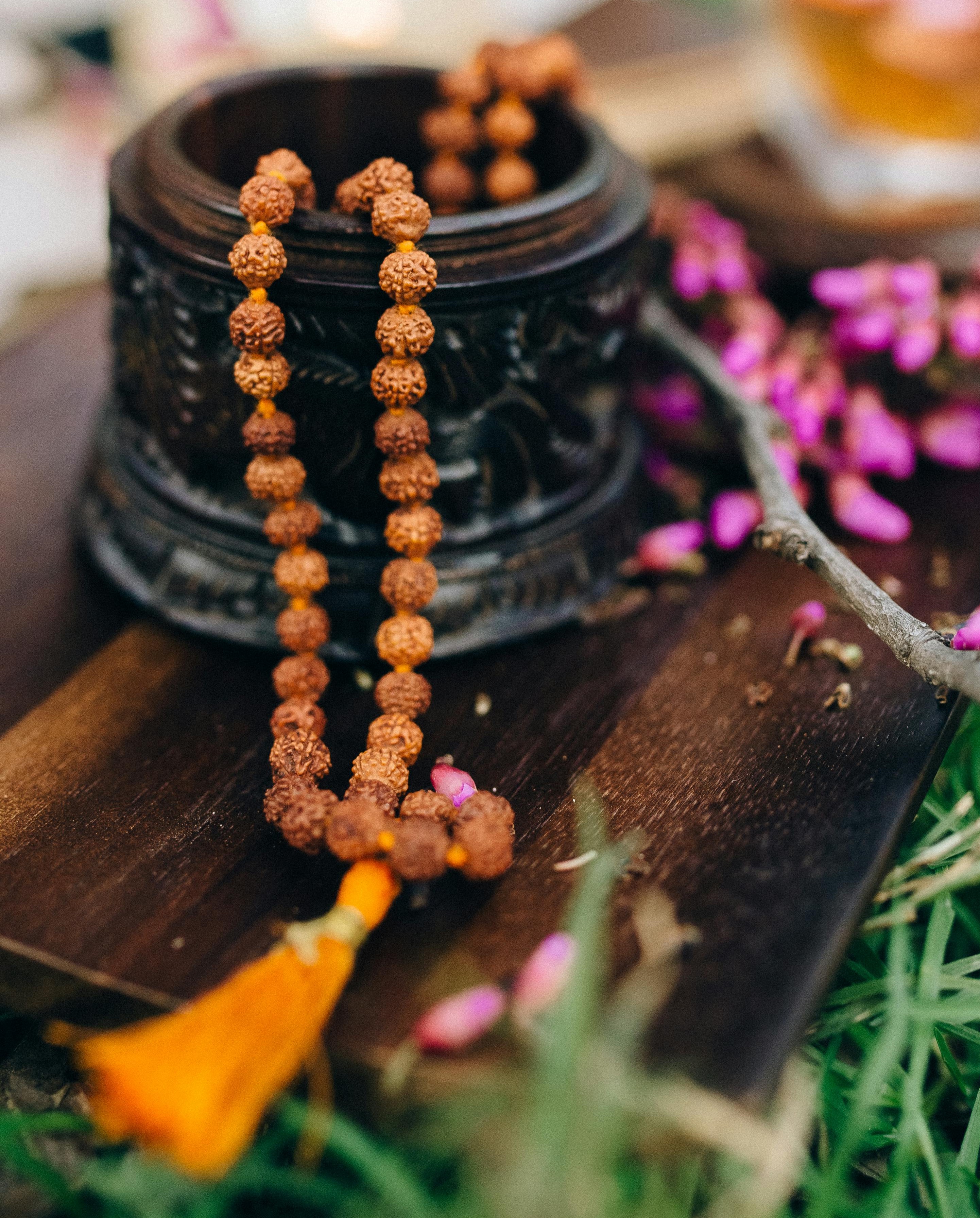
Sandalwood: With its cooling, calming influence, sandalwood malas support meditation by quieting the mind and opening the heart. The palm leaf manuscripts often recommend sandalwood for those with excess fire element (pitta) in their constitution.
Tulsi (Holy Basil): Sacred to Lord Vishnu, tulsi malas purify the aura, strengthen devotion, and create protection from negative influences.
Crystal and Gemstone Malas: Various stones align with specific planetary energies and chakras.
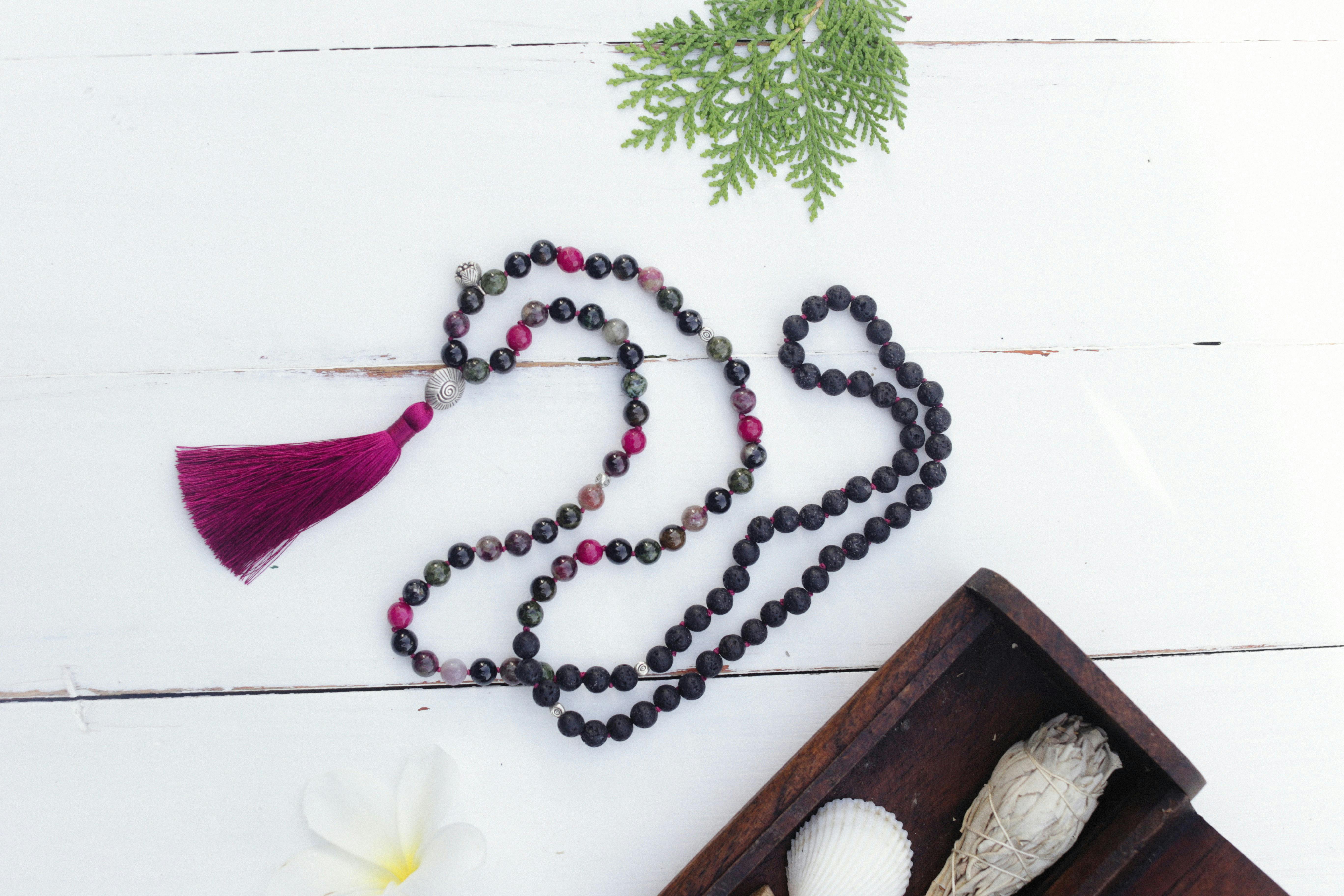
For an authentic glimpse into traditional mala craftsmanship, watch this captivating demonstration of how malas are handcrafted with sacred intention by skilled artisans preserving ancient techniques
Why We Use Malas: Benefits for Modern Seekers
In our palm leaf consultations, we often discover that clients are experiencing energy blockages or planetary influences that can be harmonized through consistent spiritual practice. The mala serves as an ideal tool for this transformation for several key reasons:
The tactile experience of moving from one bead to the next creates an anchor for the wandering mind. This physical touchpoint helps bring awareness back to the present moment, making meditation accessible even for beginners or those with active minds.
With consistent use, your mala becomes energetically aligned with your spiritual practice and intentions. The palm leaf manuscripts describe how sacred objects absorb and amplify the devotional energy invested in them, creating a virtuous cycle that deepens your practice over time.
The Vedic remedies prescribed in palm leaf readings often include specific mantra repetitions with particular types of malas. These precise practices help neutralize challenging karmic patterns and planetary influences through the power of sound vibration and intention.
Certain mala materials like rudraksha create a protective field around the practitioner, shielding from negative energies. This protection is particularly important during times of spiritual transition or planetary challenge as revealed in Nadi readings.
Beyond formal meditation sessions, simply wearing or carrying your mala serves as a physical reminder of your spiritual intentions. Many clients who receive palm leaf readings report that keeping their mala nearby helps them maintain connection to the guidance received.
While your palm leaf reading may recommend specific materials based on your unique energy signature and karmic patterns, here are general guidelines:
When in doubt, consider scheduling your palm leaf reading with our Nadi experts to receive personalized guidance on which mala will best support your spiritual journey.
If you have already received your reading, you can order your personalized Mala here.
Watch Spanda, our MyPalmLeaf artisan, creating your Mala.
The traditional method of using a mala involves several important elements:
The most traditional use of a mala is for japa meditation—the repetition of sacred sound formulas or mantras. Here’s a simple practice to begin:
Your palm leaf reading may prescribe specific mantras to balance particular planetary influences or karmic patterns. When combined with the appropriate mala material, these sound vibrations work on subtle levels to shift your energy and consciousness.
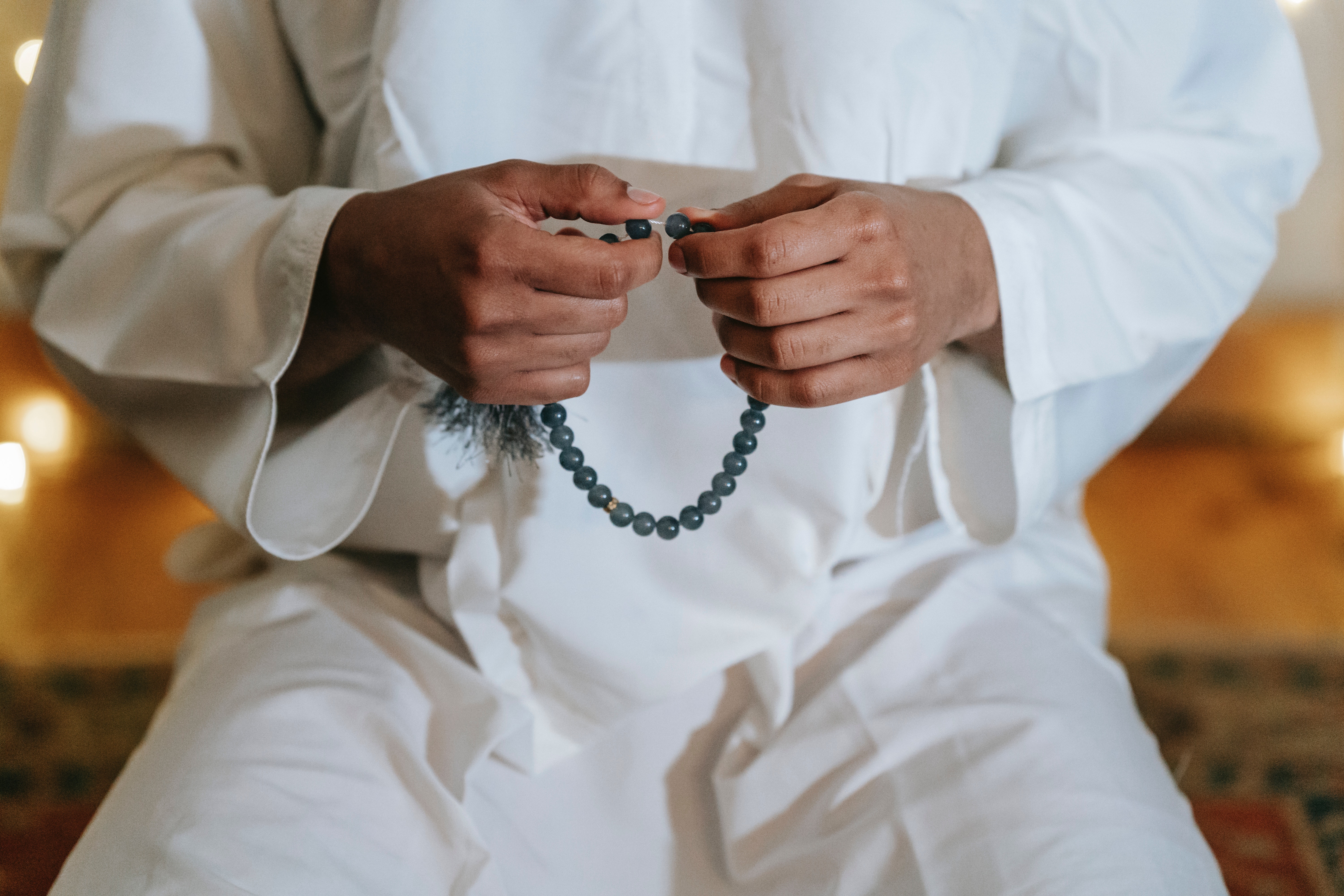
To maintain the energetic integrity of your mala:
You can also order your own personalized Mala through our expert at MyPalmLeaf.com.
Unlike many traditional spiritual practices that may seem disconnected from contemporary living, mala meditation fits seamlessly into today’s busy lifestyle:
The wisdom of the ancient Rishis remains profoundly relevant in our modern context. Their understanding of human consciousness continues to offer practical tools for navigating life’s challenges.
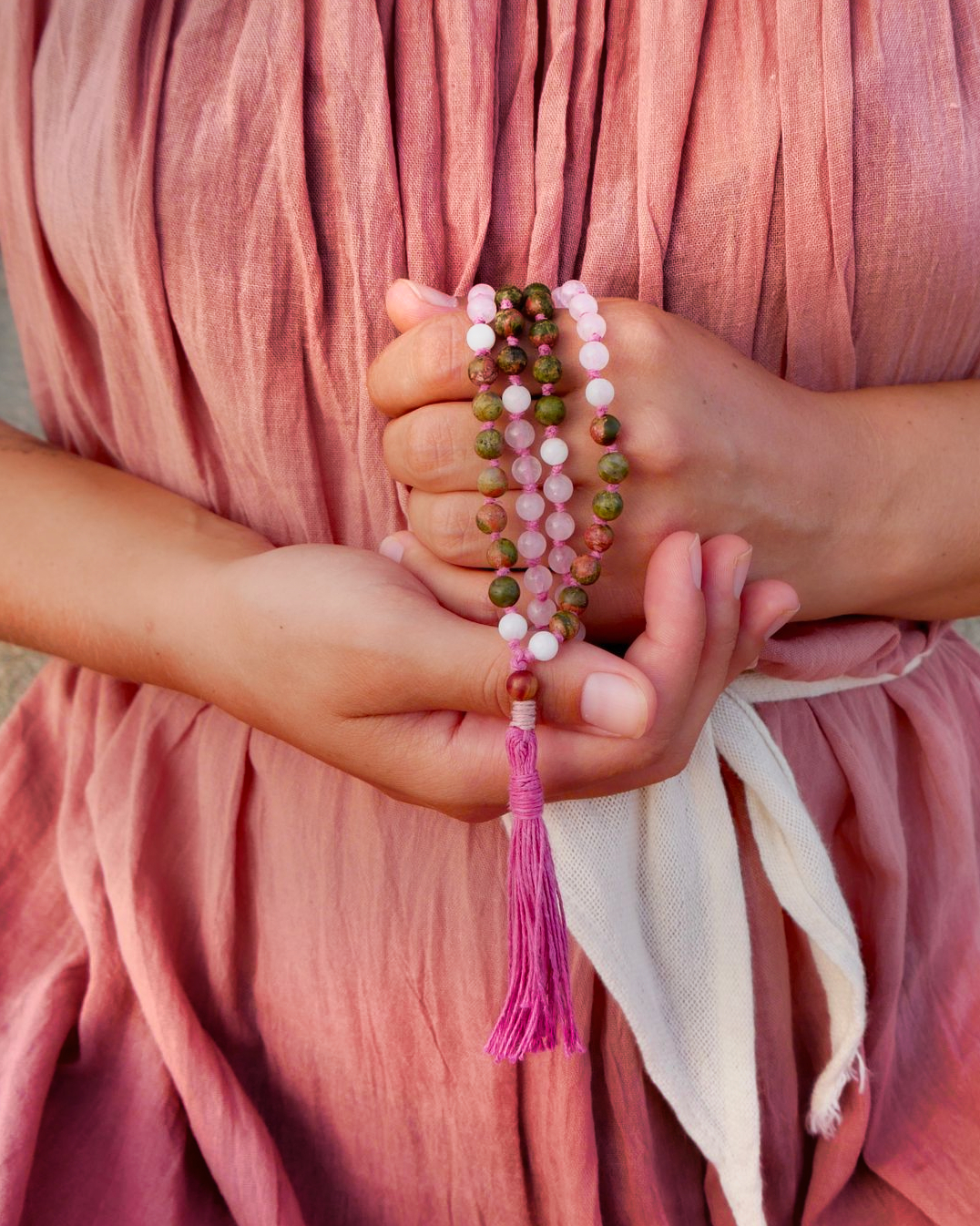
The mala, with its ancient origins and sacred geometry, provides modern seekers with a tangible connection to timeless spiritual technologies. As the palm leaf manuscripts remind us, our journey unfolds over lifetimes, and tools like the mala help us navigate this path with greater awareness.
Whether you’re new to spiritual practice or a seasoned seeker, incorporating a mala into your daily routine creates a powerful foundation for transformation, healing, and expanded consciousness.
Ready to discover the specific spiritual practices and mala materials recommended for your unique journey? Book your personal palm leaf reading today and receive guidance from the ancient Rishis tailored precisely to your path.
While traditional malas contain 108 beads, wrist malas with 27 beads (1/4 of 108) are also common. These smaller malas are perfectly suitable for practice, particularly when time is limited. Simply complete four rounds to achieve the traditional 108 repetitions.
Wearing your mala as a necklace or wrapped bracelet is a traditional practice that keeps its energy close throughout your day. However, the ancient texts suggest treating it primarily as a spiritual tool rather than merely a decorative accessory.
While your palm leaf reading may prescribe specific mantras, beginners can start with universal mantras like “Om,” “So Hum,” or “Om Namah Shivaya.” Choose a mantra that resonates with you energetically and aligns with your spiritual intentions.
A well-cared-for mala can last for many years and often becomes more powerful with continued use. Rather than replacing it based on time, observe how it feels energetically. If beads break or the string wears, consider this a significant transition point that may align with your spiritual evolution.
Traditional teachings suggest keeping your mala for personal use only, as it absorbs your specific energy and intentions. If you wish to share the practice with loved ones, consider gifting them their own mala rather than sharing yours.
